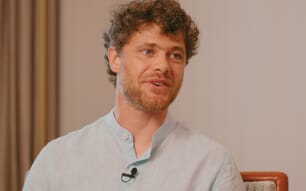
The researchers took samples of bullwhip kelp, bladderwrack and spiral bladderwrack at 43 sites, covering both US and Canadian parts of the Salish Sea © WWU
The researchers found that most contaminants occurred at levels too low to be a concern for human health. However, a few toxic chemicals – arsenic, cadmium, mercury, PCBs, lead, and benzo[a]pyrene – were found in high enough concentrations that the study’s authors recommend that people consume less than the typical amount of 5 grams of dried seaweed per person per day when the seaweeds are harvested at specific higher-risk sites.
Of the 162 contaminants found in the samples, the one that worried the researchers the most were polychlorinated biphenyls, or PCBs. Banned for use in the US since 1971, PCBs are extremely long-lasting compounds that were formerly used in electrical transformers and as a flame retardant. PCBs have been shown to be cancer-causing agents that “bioaccumulate” in the organisms that ingest them; the larger and more longer-lived the organism, the more PCBs it is able to store in its tissues which may cause harm to the organism. Once that organism – whether it is a fish, a seaweed, or shellfish – is eaten by humans, the PCBs then begin bioaccumulating. High exposure to PCBs can cause cancer, birth defects, developmental delays, and liver changes.
Of the 43 sampling sites, some of the most heavily contaminated seaweeds were found near highly industrialised sites such as Victoria Harbor in BC and Waterman Point near Bremerton and Smith Cove near the Seattle Cruise Terminal.
The study was initially motivated by tribal members asking whether the seaweeds they were harvesting were safe to eat, said Jennifer Hahn, the lead author of the paper.
“These are traditional foods for many of the Coast Salish peoples,” said Hahn in a press release. “But given the highly industrialised nature of many parts of the Salish Sea, they correctly had concerns about pollutant levels in the foods that they had traditionally harvested for so long. That’s what got me started down this rabbit hole, knocking on doors and building relationships to put together a project that took more than six years to complete, and ended up with me sampling from Campbell River, BC, all the way south to Olympia.”
Co-author Ruth Sofield said the study fills a niche in the vital understanding of an increasingly important local food source.
“This study was quite an effort - there aren't many studies that do cross-border sampling like this, and there is little understanding of seaweed contamination in the Salish Sea,” she said.
The studies’ authors caution that while contaminant concentrations can be high enough to have human health risks, these risks need to balanced with the nutritional benefits from consuming seaweeds, which are low in fat and can be high in fibre, minerals and antioxidants.
“What we don’t want to get lost is how good seaweed is for you. It’s extraordinarily nutritious, and many folks are calling it ‘the new kale,’” Hahn said. “But at the same time we need to be able to show anyone looking to harvest seaweed where they can do it most safely, and how much of it they should eat.”
The completed study is available for review on the scientific journal PLoS One.




